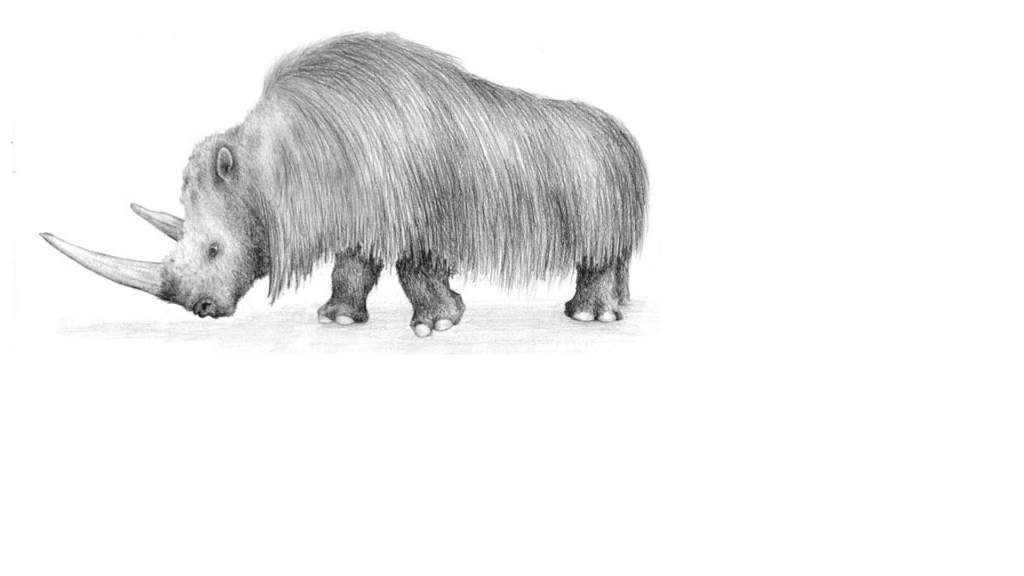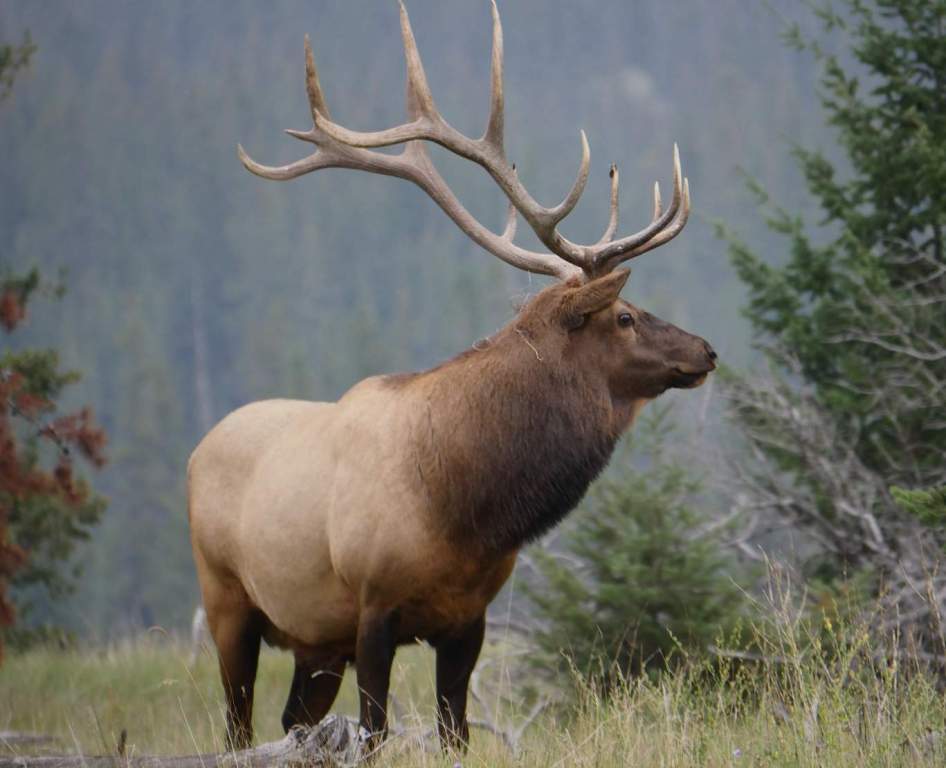Scientific name: Coelodonta antiquitatis
Phylum: Chordata
Class: Mammalia
Order: Perissodactyla
Family: Rhinocerotidae
When did it become extinct? The woolly rhinoceros is thought to have survived until around 10,000 years ago.
Where did it live? The woolly rhinoceros was probably the most widespread rhinoceros of all time, as its remains have been found all the way from Scotland to South Korea and to Spain in the south of Europe.
The world is still in the grip of a cold period, and it has been for the last 40 million years
or so. Around 3 million years ago, this cold period intensified, and huge ice sheets spread
across much of the Northern Hemisphere. From then until now, the ice sheets have waxed and waned in fairly regular cycles played out over 40,000- to 100,000-year cycles. During this intensification, life had to adapt, move, or go extinct. The rhinoceroses, with the thermal inertia afforded by their big, heavy bodies, were well placed to take advantage of these icy conditions, and the fossil record shows that they positively embraced the ice age and expanded their range to cover much of the Northern Hemisphere. This success was mainly due to one species: the woolly rhinoceros.
The woolly rhinoceros was about the same size as the biggest living rhinoceroses, the white and Indian rhino, but thanks to its shaggy coat, it probably looked a lot more imposing. This Ice Age brute was around 1.8 m tall and 3.5 m long, and it probably weighed in the region of 3 tons.
On its head were two horns, the longest of which was around 1 meter. As its name suggests, the woolly rhinoceros was completely clothed in thick fur, and this pelage, together with a thick layer of fat beneath its skin, helped to insulate its body from the cold. Our ancestors were obviously well aware of the woolly rhinoceros, as it has been depicted numerous times in European cave paintings. Some of these cave paintings appear to show the woolly rhinoceros with a dark-colored band of fur around its middle. Whether this was artistic license on behalf of the prehistoric painter or the genuine appearance of the animal is impossible to know, but these images do give us a tantalizing glimpse of the world through the eyes of our ancient ancestors.
The realm of this great, furry beast was the tundra and steppe that extended out in front of the immense ice sheets that capped the Northern Hemisphere. This was a punitive environment, but lots of animals appeared to have thrived in these cold conditions. Like the rest of its kind, the woolly rhinoceros was an herbivore, but was it a browser or grazer? This question has divided paleontologists for years, but it is very likely that this giant was a grazer. The woolly rhinoceros’s neck muscles were very powerful, which is just what you would expect for an animal that had to tear mouthfuls of grass from the ground.
Also, ancient, buried pollen from long-dead flowering plants can tell us a lot about the ancient earth, and in the places where the woolly rhinoceros was found, the most common plants were grasses and sedges. On the icy steppe and tundra, grass was covered for some of the year by snow, and it seems these big plant eaters got at their food by using their long horns to brush away the snow.
The woolly rhinoceros horns that have been unearthed show abrasive wear on their outside edges, indicating that they were probably swung to and fro along the ground to sweep the snow from the grass. Grasses and sedges may have been abundant on the ice age steppe and tundra, but these plants are far from easy to digest. Every cell in a blade of grass is packed with proteins, fats, and carbohydrates, but these nutrients are difficult to get at because the cell is encased in a wall of cellulose. Mammals like the woolly rhinoceros can only digest grass with the help of symbiotic bacteria.
In rhinoceroses and other herbivores, such as horses and rabbits, these bacteria are found in the back end of the animal’s gut, and here they digest the tough cellulose cell walls of the plants to release the contents. Some of these nutrients are used by the bacteria, and some are absorbed by the herbivore. This was quite an inefficient process, so the woolly rhinoceros spent a lot of time each day eating to supply its considerable bulk with sufficient energy. The oldest remains of the woolly rhinoceros are around 350,000 years old, and it is possible
that even older bones may be lying in the ground awaiting discovery. During its time on earth, the woolly rhinoceros experienced a number of global cooling and warming events, and its populations probably expanded and contracted, reflecting the movement of the great ice sheets. With this in mind, could climate change alone have led to the extinction of this animal? No is the likely answer, and it was probably a combination of factors that led to the extinction of this megaherbivore. What about hunting? We know that Neanderthals and our ancestors hunted this animal.
To them, a fully grown woolly rhinoceros was a massive source of meat, fat, bone, fur, and leather, and the killing of such a large, dangerous animal was probably seen as a very risky undertaking—an act that the warriors within the tribe may have used to demonstrate their bravery. Climate change definitely squeezed the populations of this animal, especially the warmer cycles, and with their populations under pressure, human hunting may have been sufficient to kill them off completely or reduce their numbers to a point from which recovery was impossible.
-
In 1929, in Staruni, Ukraine, an amazingly well-preserved female woolly rhinoceros was discovered. Apart from the fur and hooves, the carcass was complete. It had come to rest in oil- and salt-rich mud, and these conditions had prevented bacterial decay. It is currently on display in the Krakow Museum of Zoology, Poland.
-
It has been suggested that as the woolly rhinoceros was such a large, dangerous animal, prehistoric humans may have hunted it using traps instead of facing it directly and risking a goring on the end of its impressive horn. Perhaps ancient hunters drew them to excavated pits or deep mud. Once trapped, the struggling rhinoceros could have been safely killed with spears.
-
The closest living relative of the woolly rhinoceros is thought to be the rare Sumatran rhinoceros (Dicerorhinus sumatrensis). This shy, rarely seen animal is the smallest of the living rhinoceroses, and bizarrely, its whole body is thinly covered in reddish fur.







